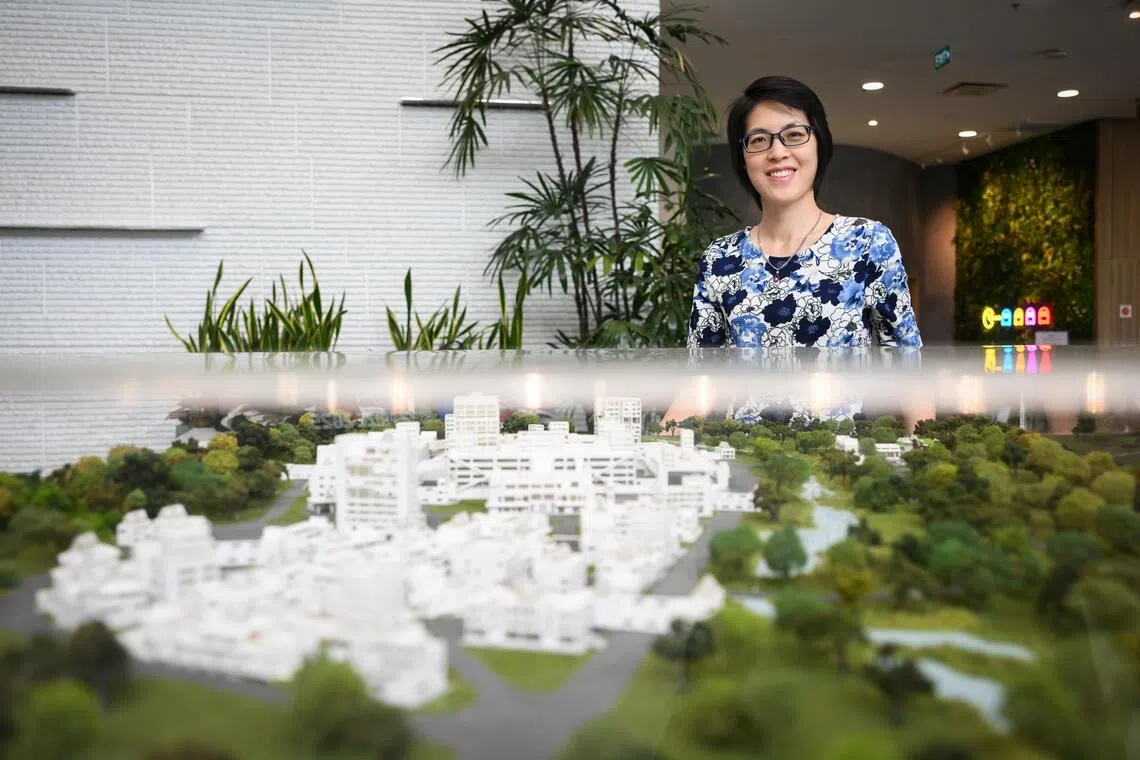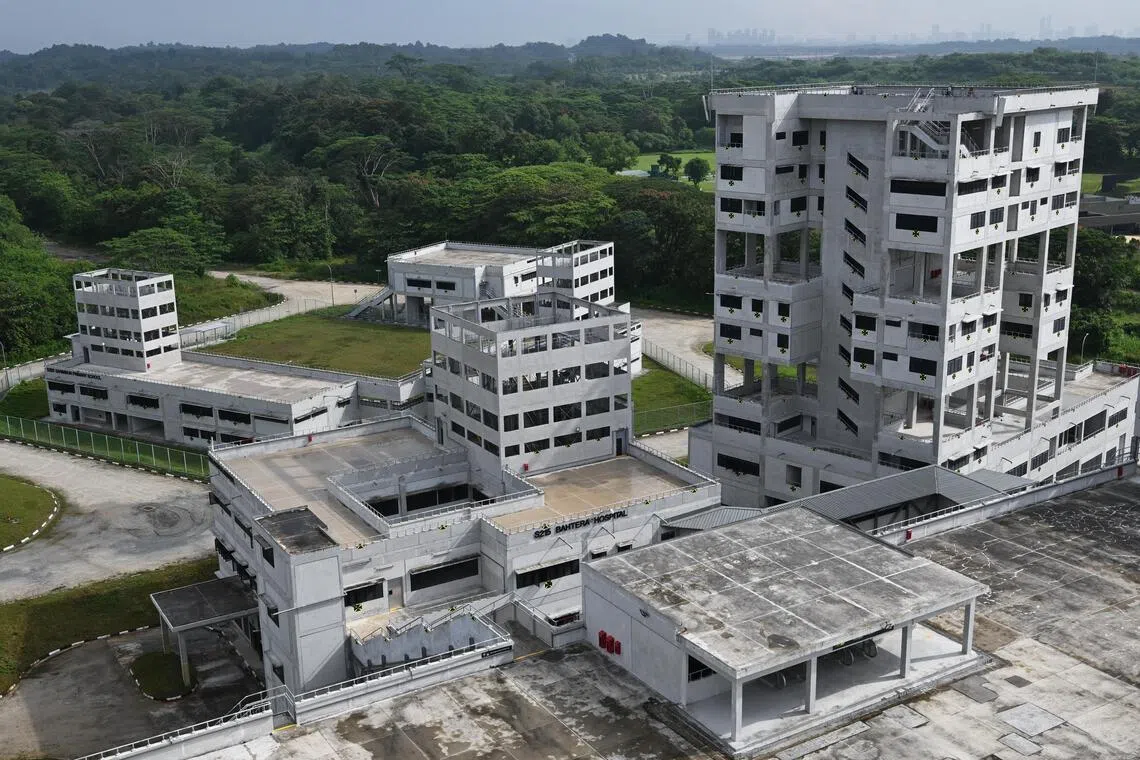Team behind Safti City among three defence tech award winners
Sign up now: Get ST's newsletters delivered to your inbox

Team leader Beatrice Kwan said that from an engineering perspective, Safti City is one of the most unique training facilities in the world.
ST PHOTO: SHINTARO TAY
Follow topic:
- Safti City team won Defence Technology Prize for innovative urban training facility, which includes realistic features like "shoot back" targets using modified laser tech.
- Advanced Analysis Team received award for system leveraging commercial tech for enhanced data analysis and decision-making, enabling the SAF to combat diverse threats.
- Guided Systems Technology team from DSO won for R&D, employing precision engineering for high-performance system designs validated with live data to aid SAF.
AI generated
SINGAPORE - Three teams, including the one behind Singapore’s latest high-tech urban training facility, were recognised on Oct 1 for their contributions to the technology front of Singapore’s defence.
They received the Defence Technology Prize from Defence Minister Chan Chun Sing at an award ceremony held at the Defence Science and Technology Agency (DSTA).
The team behind Safti City – about 15 individuals led by DSTA, with members also from the army and ST Engineering – were among two teams that picked up the award in the engineering category. Safti City is an urban training facility located in Old Choa Chu Kang Road that launched its first phase in March
Established by the Ministry of Defence (Mindef) in 1989, the annual award recognises individuals and teams that have made significant technological contributions to Singapore’s defence capabilities.
DSTA senior programme manager and team leader Beatrice Kwan Li Min, 41, said that from an engineering perspective, Safti City is one of the most unique training facilities in the world. It has a design that reflects the modern cityscape, along with training systems and instrumentation that bring the facility to life.
Safti City, a multi-million-dollar project announced in 2017, will span around 88ha when completed. It can currently host training for high intensity urban operations, homeland security, counter-terrorism and disaster relief operations.
Since the launch of the first phase of Safti City in March, more than 8,000 soldiers have trained in the facility.
Said Ms Kwan: “This is just the start. With so much innovation and creative design, going forward, it is up to the imagination for new and more complex types of training that can be done here.”
Among its features are swing panels – big gates that can open or close to alter road networks or change the layout of streets – that allow the army to train for different mission scenarios of varying complexity, said Ms Kwan.
Speaking at the award ceremony, Mr Chan said Singapore has always taken a long-term perspective on its capability development. The work of the three award recipients also builds on years of efforts from past teams.
This is something that must be retained amid changes in geopolitics, the nature of warfare and the demographics, talent and aspirations of Singaporeans, he said.
Singapore’s own conceptual understanding of where it applies its capabilities is what needs to change, said Mr Chan.
While a large part of Mindef’s efforts was previously dedicated to the capabilities for warfighting, it needs to put quite a lot of effort today in “grey zone operations” – the area between peace and war, he added.
“And this is where, in the investment of our talent, efforts and resources, we have to rebalance how we look at the entire spectrum,” he said.
On the design of Safti City, Ms Kwan said there are also targets that can “shoot back” at soldiers, to create a realistic training environment.
The technology was modified from robotic targets that are generally used for live firing. They now include a laser technology system to engage with the soldier and also use computer vision to detect soldiers to respond to.
Safti City also has a simulated transport hub, its largest training building, with a bus interchange, MRT platforms and decommissioned trains. This was “creatively designed” to be an underground hub built above ground, Ms Kwan said.
She said the team looked at the train stations at City Hall, Dhoby Ghaut and Raffles Place, and incorporated features such as the integrated retail spaces, the transfer concourses and the multiple connections to street level and adjacent buildings.
“Although it is built above ground, when you’re inside, you actually feel that you’re underground, because of the way we have designed the walls and the covered windows,” she added.

Since the launch of the first phase of Safti City in March, more than 8,000 soldiers have trained in the facility.
ST PHOTO: SHINTARO TAY
The Advanced Analysis Team, comprising members from DSTA and DSO National Laboratories, also received the engineering award.
They worked on a system which allows Mindef and the Singapore Armed Forces (SAF) to leverage fast-moving commercial technologies to keep pace with changing threats.
Team leader Elsie Toh Choon Keow, who oversees capability development for the strategic communications domain at the Information Programme Centre at DSTA, said the SAF needs to analyse information from more data sources in more varied data formats to deal with the daily threats and challenges.
Ms Toh, 55, said her team developed new ways of analysing data to enhance decision-making, such as the use of advanced graph analytics to connect the dots between different data sources.
The third award went to the Guided Systems Technology team from DSO National Laboratories, which won for research and development. They built up expertise in designing complex systems, developed accurate models to simulate the interactions of components, and validated these models with live data.
The team had also employed precision engineering and advanced manufacturing methods to prototype and demonstrate the desired high-performance designs to SAF, according to the award citation.


